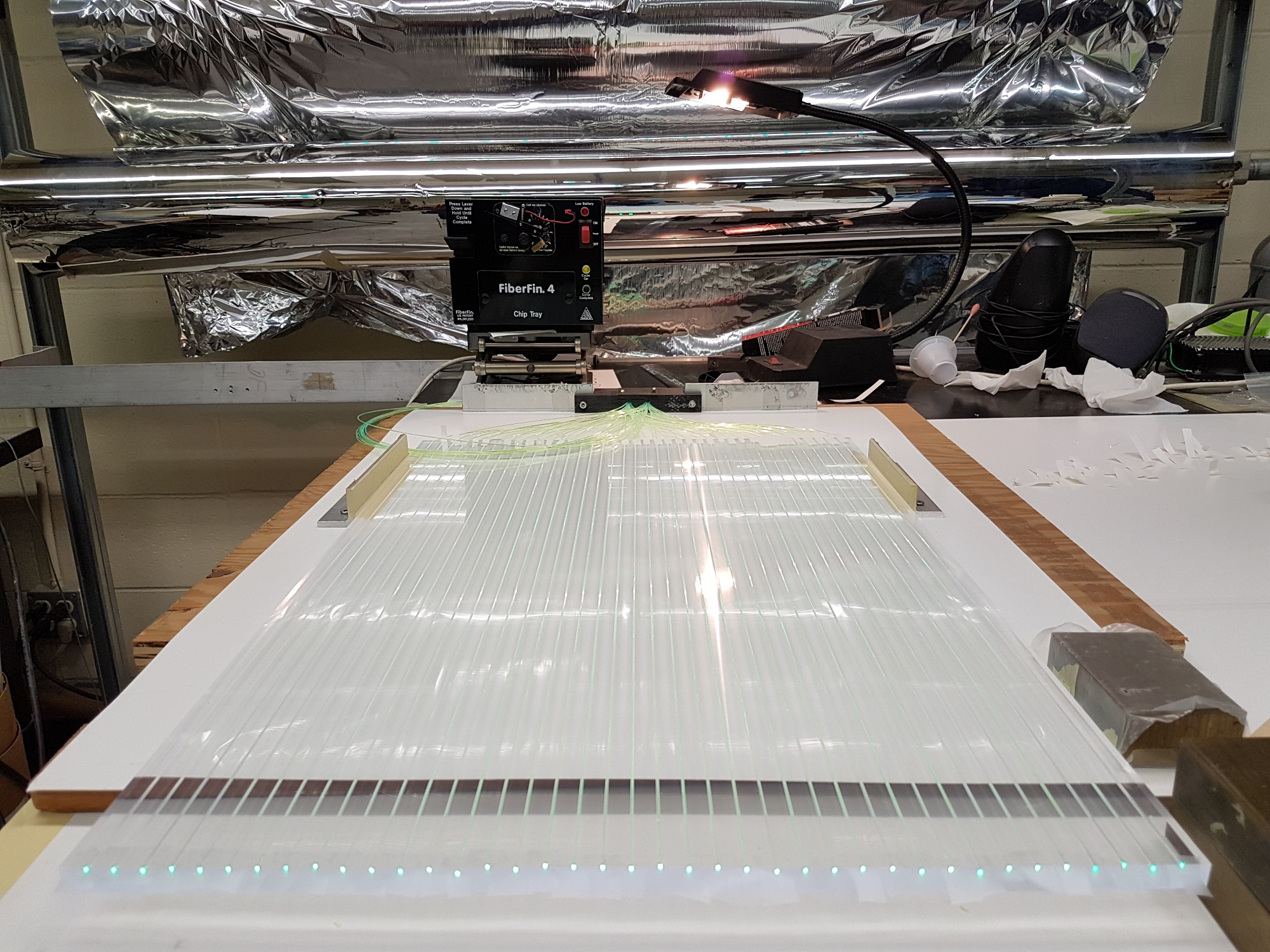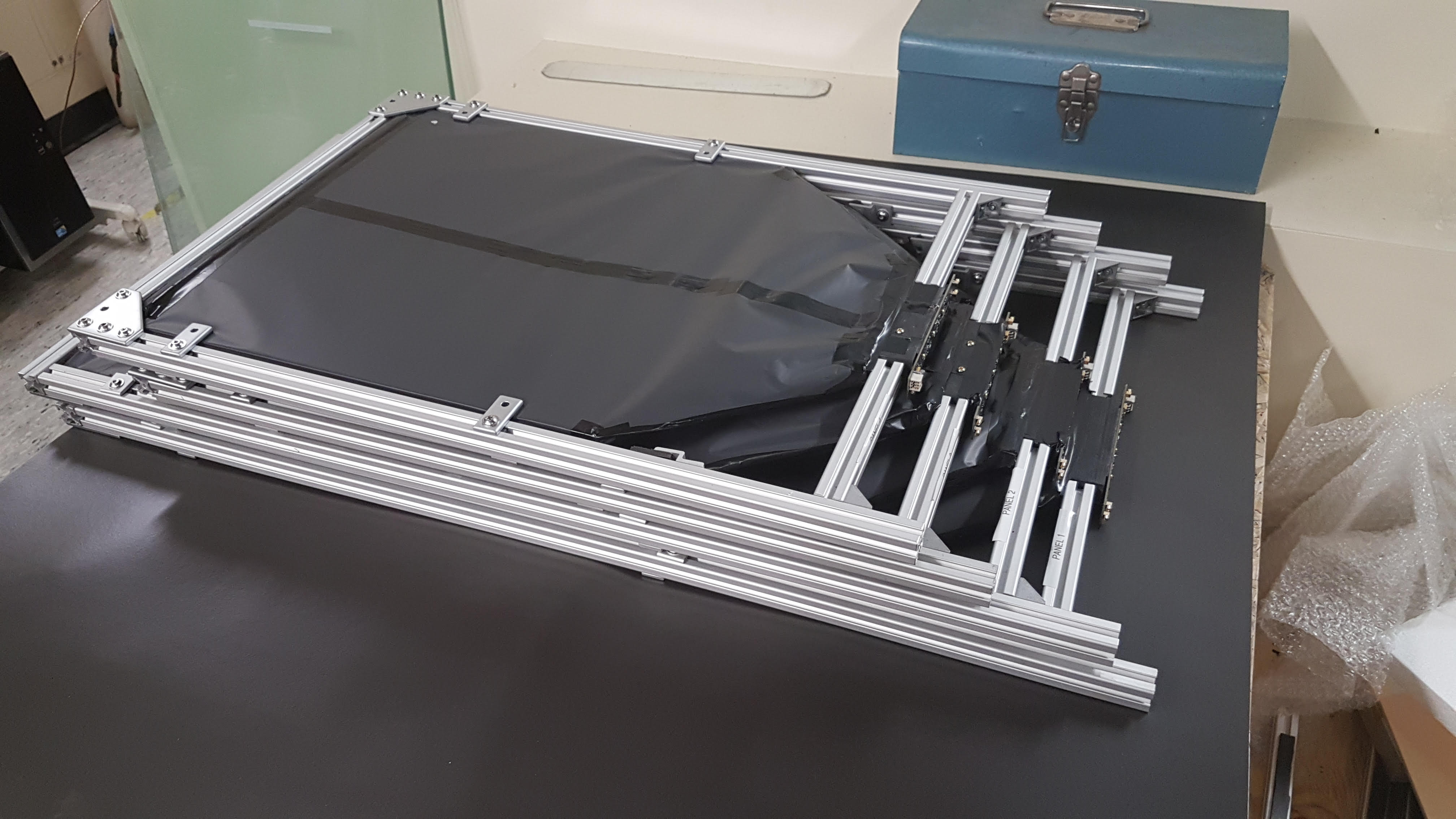The manipulations of an antiproton plasma can be easily monitored using particle detectors, such as plastic scintillators. They are the most common type of detector encountered in particle and nuclear physics. Owing to their fast response (of the order of a few nanoseconds), they are ideal to observe the annihilation of antiprotons while they are injected into the Catching Trap, shuffled around in the Penning traps or dumped out of the traps. They can be easily deployed, which is advantageous in research setup. Their robustness makes them well suited to the harsh experimental environment.
As the antiproton annihilation products pass through the scintillator, its molecules are excited and emit light in a process called fluorescence. Such light is not re-absorbed but collected by a Photomultiplier Tube (PMT) or by a Silicon Photomultiplier (SiPM). These devices convert the light in an measurable electrical signal.
The plastic scintillators used in ALPHA have a rectangular shape and a thickness of the order of a centimeter, and they are therefore dubbed scintillator panels.

In order to ensure that enough light reaches the PMT a light guide is employed to connect one side of the scintillator to the PMT windows. In the case of the SiPM, wavelength-shifter fibers glued into the panel itself, couples the scintillation light into two sets of four SiPM.

